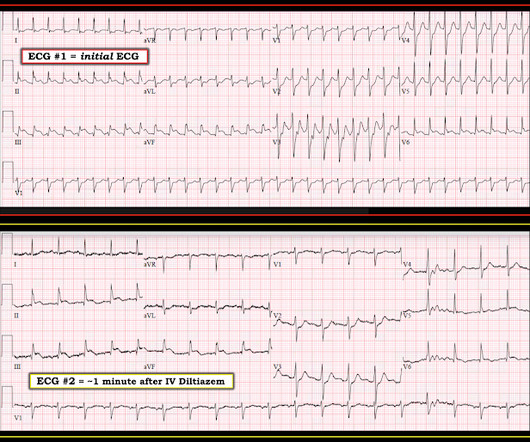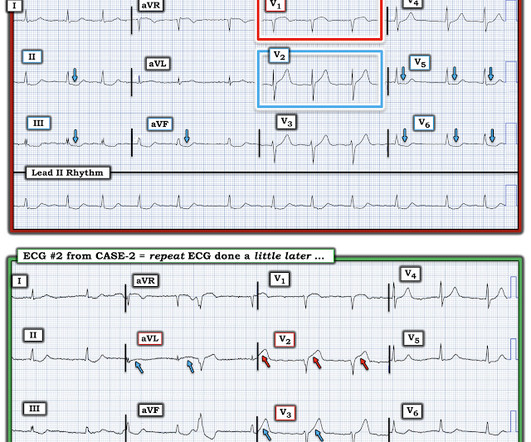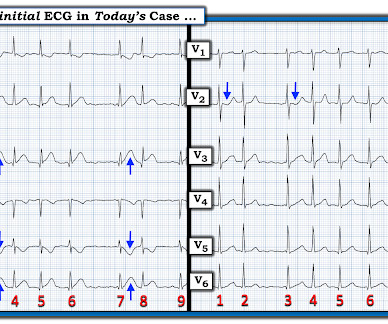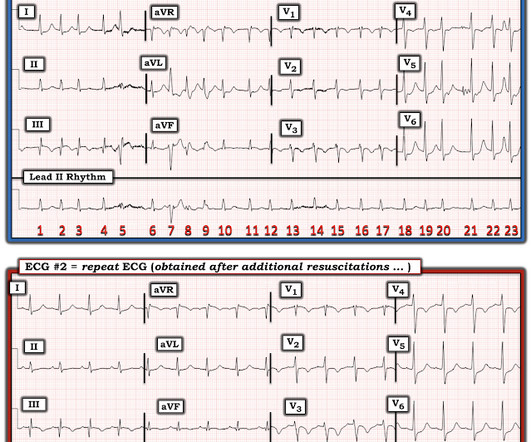Arrhythmia? Ischemia? Both? Electricity, drugs, lytics, cath lab? You decide.
Dr. Smith's ECG Blog
NOVEMBER 26, 2018
The axiom of "type 1 (ACS, plaque rupture) STEMIs are not tachycardic unless they are in cardiogenic shock" is not applicable outside of sinus rhythm. In some cases the ischemia can be seen "through" the flutter waves, whereas in other cases the arrhythmia must be terminated before the ischemia can be clearly distinguished.
















Let's personalize your content